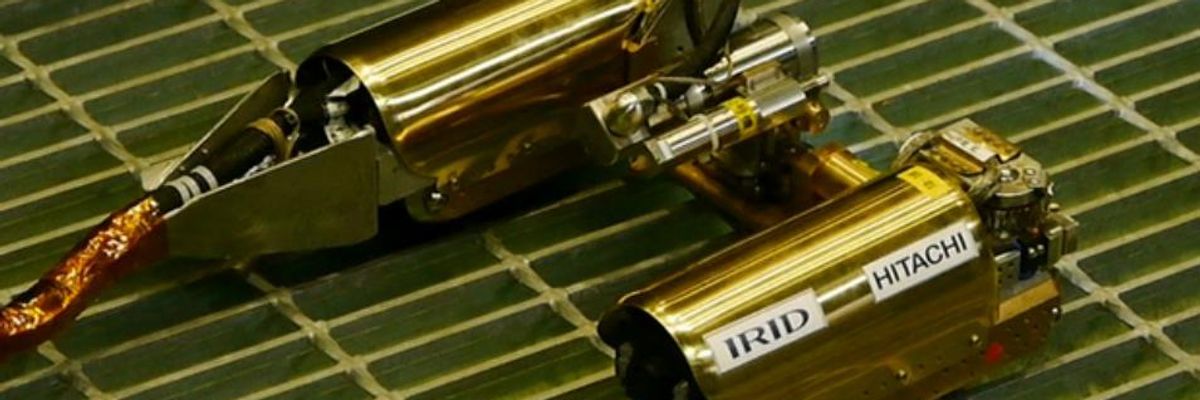For the first time, a robot entered the highly radioactive primary containment vessel (PCV) of Reactor 1 at the Fukushima Daiichi nuclear plant on Friday, in order to investigate the state of its dangerous and damaged interior, plant operator Tokyo Electric Power Co. (TEPCO) has said.
The plant was heavily damaged by the 2011 earthquake and subsequent tsunami that devastated northern Japan. Determining the state of the uranium fuel that powered the station is key to dismantling of the plant, a process expected to take decades.
The Japan Times reports:
It is the first time a robot has entered the PCV of any of the three stricken reactors at the meltdown-hit plant, and the snake-like contraption might give the utility a better idea of what happened to the pressure vessel and its core in the disaster.
TEPCO plans to have the robot check half of the first floor of the bulbous PCV on Friday and examine the other half on Monday.
Ultimately, the utility plans to explore the underground portion of the vessel, where the melted fuel rods are believed to have puddled. But that is not yet feasible because the robot isn't waterproof. A waterproof version is expected to be developed by the end of next March.
According to the Shanghai Daily:
The robot being used Friday, equipped with cameras, a thermometer and a dosimeter, has been developed by Hitachi-GE Nuclear Energy Ltd. and the International Research Institute for Nuclear Decommissioning, but TEPCO has had issues with using robots in the past.
Such problems include limited operating life, failing circuitry and malfunctions, and unclear images obtained due to high levels of radiation. Some robots used in the past have also been lost due to getting stuck on debris in the containment vessels or in narrow spaces, or on uneven surfaces and have been irretrievable.
The robot deployed Friday is expected to circumnavigate some of these problems as it has the ability to change shapes to fit into its surrounding, with its most significant function being able to shift into a U-shape to better fit inside the vessel, said TEPCO.
Robots are being used to explore the site because the task would prove fatal for humans due to lethal levels of radioactivity.
"The radiation level is very high inside the PCV and we assume that the maximum time for investigation is five to six hours each time, though the robot can investigate for 10 hours," Tomohisa Ito, a spokesman for the International Research Institute for Nuclear Decommissioning, toldIDG News Service via email.
